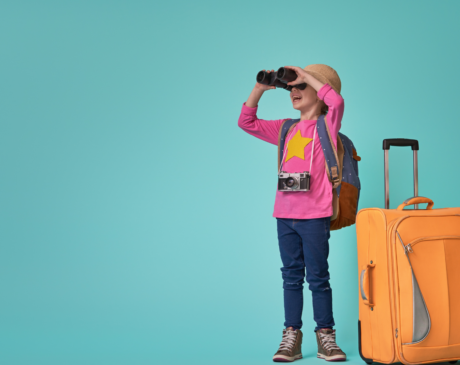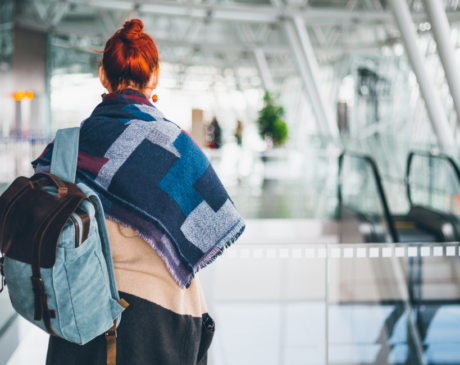Capturing Memories on the Road: Backpacker Photography

Traveling as a backpacker is not just about the destinations; it’s a transformative journey filled with unique experiences and stories waiting to be told.
Backpacker photography goes beyond the typical tourist snapshots, delving into the heart of the places visited and the people encountered.
In this article “Capturing Memories on the Road: Backpacker Photography and Stories”, we explore the art of capturing memories on the road through the lens of a backpacker’s camera; stay tuned!
Backpacker Photography: the Real Essence
Backpacker photography is about more than just taking pictures; it’s a way of preserving the essence of a journey!
Unlike traditional tourists who breeze through popular attractions, backpackers immerse themselves in the local culture, seeking authenticity in every experience.

This mindset translates into their photography, where each image becomes a narrative thread woven into the larger tapestry of their adventure.
While iconic landmarks have their charm, backpacker photography extends beyond the confines of tourist hotspots. The focus shifts to hidden gems, untrodden paths, and encounters with locals.
One of the defining features of backpacker photography is the emphasis on human connections.
Beyond mere observation, backpackers engage with locals, sharing stories and capturing the human experience.
Faces tell tales of resilience, joy, and everyday life, creating a rich mosaic of cultural exchange within each frame. Backpacker photography celebrates imperfections!
The worn-out backpacks, tattered maps, and well-traveled hiking boots are as much a part of the story as the stunning landscapes.
These imperfections become symbols of the resilience and adaptability required for life on the road.
10 Travel Tips for Backpackers
Extreme Weather
The most challenging weather conditions, such as storms or thick fog, may discourage hikers, but they should attract us.
They are fantastic for landscape photography!
Midday shots are often unsatisfying, but adding an overcast sky can regain a lot of atmosphere.
Rain can also be our friend and make ordinary scenes spectacular – we might even be rewarded with a rainbow!
The only precaution is to always have a waterproof cover for the camera in your bag.
When planning shots, keep an eye on the weather forecast and be ready to change subjects based on conditions.
Overcast days, for example, are perfect for photographing woods and forests and for long exposures of water, and much less suitable for grand vistas.
Play with Light
Shooting with the sun at your back is a classic piece of advice and actually helps avoid exposure and glare issues.
However, images, especially landscapes, end up looking a bit flat.
Backlighting can be much more theatrical and restore importance to lights and shadows in the scene. It can also be an excellent solution on cloudy days, with ethereal and atmospheric results.
Some subjects, moreover, look better in backlight: meadows, tea plantations, or rice fields show their best, intense, and vibrant green – especially when paired with a polarizing filter.
Even intermittent cloud cover can be ideal because it makes the sky more interesting and allows the sun to cast its rays on parts of the landscape.
Take Your Time
Use a tripod to force yourself to slow down and think about which elements of the scene are most important to you!
If the sky is a homogeneous block, for example, don’t let it occupy a third of the frame just to adhere to the rule of thirds.
Look for other elements that can give more strength to the composition.
Strong shapes and contours can direct the gaze in the scene, while balance can be restored with isolated trees or boulders at the intersections of the thirds lines.
New Perspectives
The most famous tourist destinations are true icons.
We all have absolute familiarity with the Taj Mahal or Machu Picchu, even if we’ve never seen them in person.
To create a memorable image, replicating the same shot already taken by every photographer and visitor is not enough.
We need to explore and find an angle that seems special to us.
Walk around a monument and see how it changes in relation to its surroundings: as we move, different elements of the scene combine in different ways.
Iconic Events
Icons are not only monuments: events, rituals and festivals are equally iconic. Research and try to understand what is happening and where.
Luang Prabang in Laos is more known for the lines of monks in morning alms rounds than for the spectacular monasteries.
The Venice Carnival is another example: despite the crowds, it is simply the best time to photograph the city.
Plan our trips at the right time, commit to getting to the right place, and then immerse ourselves in the events.
The most engaging images are born when we become part of what is happening.
Interacting with People
Interacting with locals is one of the great pleasures of traveling. In the post-Covid era, warmth and hospitality might be tainted by a bit of fear of strangers.
That’s why, as soon as possible, it’s good to approach subjects and ask for permission to take a portrait.
This way, you can get closer and capture more intimate images, also photographing something unique, like the person’s interaction with the photographer.
Rely on simple humanity to break the ice: look people in the eyes and smile. It works wonders, even when you don’t speak the same language.
Eye Contact
Eye contact makes portraits more engaging (especially if the subject is wearing a mask).
Unfortunately, having a camera in front of the face tends to prevent subjects from looking directly into our eyes: few have the courage to look at the lens, most feel intimidated.
Composing with the rear display is not helpful because the subject will seek our gaze and continue not to look into the camera.
Therefore, it’s good to establish eye contact while chatting with the subject, then briefly bring the camera to the eyes, take a shot a couple of times at most, and lower it before the other person looks elsewhere.
Smile, keep talking and after a while, raise the camera again. Never hold it in front of the face long enough to be intrusive. It’s not an easy technique.
It’s best to practice… with friends and family!
Searching for Details
Cities are not just about grand buildings and grandiose views: often, details and small snapshots of local color tell their story better.
That’s why it’s always worth walking and looking for interesting scenes – even simple things, like a doorstep with a sleeping cat, the frame of a window, a typical shop.
In Asia, for example, it seems that life is all out on the streets.
We can see people washing, cooking, or eating on the street (in some places, in the hottest hours, even people sleeping) and it’s common to find artisans working on the edges of the streets, often with little regard for safety.
These are all scenes we won’t see in the more touristy and Westernized areas: aim for the typical neighborhoods, the older areas, the less-traveled alleys.

Try Everything
The first and most effective way to ensure that we photograph a travel experience well is to truly experience it; capturing memories on the road is a real challenge for backpacker photography.
Anyone looking at a photographer’s images will feel an echo of the emotions they felt while taking them.
- If they were bored or uninterested, it will show in the images.
- If they were excited, enthusiastic, or scared, the observer will feel it.
Therefore, we should become collectors of experiences to put ourselves in a position to photograph them in a way that touches the emotions of the observers.
Through images, we can bring people to the same place we were.
Approach the subjects, try everything the moment can offer us, and we will be able to evoke a response in the audience.
Think with All Senses
If we think of coming home with just a collection of landscapes, we might as well buy some postcards; instead, travel is often an assault on our senses.
New foods and flavors are among the simplest things to try.
In many parts of the world, we can find them simply on the street: grocery stalls and street food stands are everywhere and can be extraordinary subjects.
Let’s also try to show the context, through the inclusion of the background and the sense of place, or people cooking or eating.
Let’s always strive to create images that can allude to sensory experiences beyond purely visual ones.
Did you like our article: “Capturing Memories on the Road: Backpacker Photography”?
To achieve this, let’s include people reacting to these stimuli: it’s an effective way to give the impression of what it’s like to be in that place.



